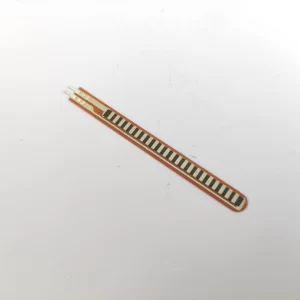Description
1. **Principle**: Piezoelectric sensors operate on the principle of the piezoelectric effect. This effect describes the ability of certain materials (such as quartz, certain ceramics, and some organic substances) to generate an electric charge in response to applied mechanical stress.
2. **Material**: Piezoelectric sensors are typically made of piezoelectric materials like quartz, lead zirconate titanate (PZT), or polyvinylidene fluoride (PVDF). These materials exhibit the piezoelectric effect, allowing them to convert mechanical energy into electrical signals.
3. **Construction**: The sensor typically consists of a piezoelectric crystal or material sandwiched between two electrodes. When mechanical force is applied to the sensor, it causes the material to deform, generating a voltage across the electrodes.
4. **Operation**: When the sensor is subjected to pressure, vibration, or acceleration, it generates a voltage output proportional to the applied force or deformation. This voltage can be measured using appropriate instrumentation.
5. **Sensitivity**: Piezoelectric sensors are known for their high sensitivity to dynamic forces and rapid response times. They can detect very small changes in pressure or acceleration.
6. **Applications**: Piezoelectric sensors find applications in a wide range of industries including automotive (e.g., engine knock detection, tire pressure monitoring), aerospace (e.g., structural health monitoring), medical (e.g., ultrasound imaging, force sensing in surgical instruments), consumer electronics (e.g., touchscreens), and industrial automation (e.g., vibration monitoring).
7. **Advantages**: Some advantages of piezoelectric sensors include their high sensitivity, wide frequency response, robustness, and suitability for both static and dynamic measurements.
8. **Disadvantages**: Despite their advantages, piezoelectric sensors can be sensitive to temperature variations, exhibit a non-linear response under certain conditions, and may require careful handling to avoid damage.
9. **Signal Conditioning**: The electrical output from piezoelectric sensors often requires signal conditioning such as amplification, filtering, and impedance matching to make it suitable for processing or recording by data acquisition systems.
10. **Miniaturization**: With advancements in technology, piezoelectric sensors are becoming smaller, more lightweight, and more cost-effective, enabling their integration into compact and portable devices for various applications.






Vishudev –
Nice thing